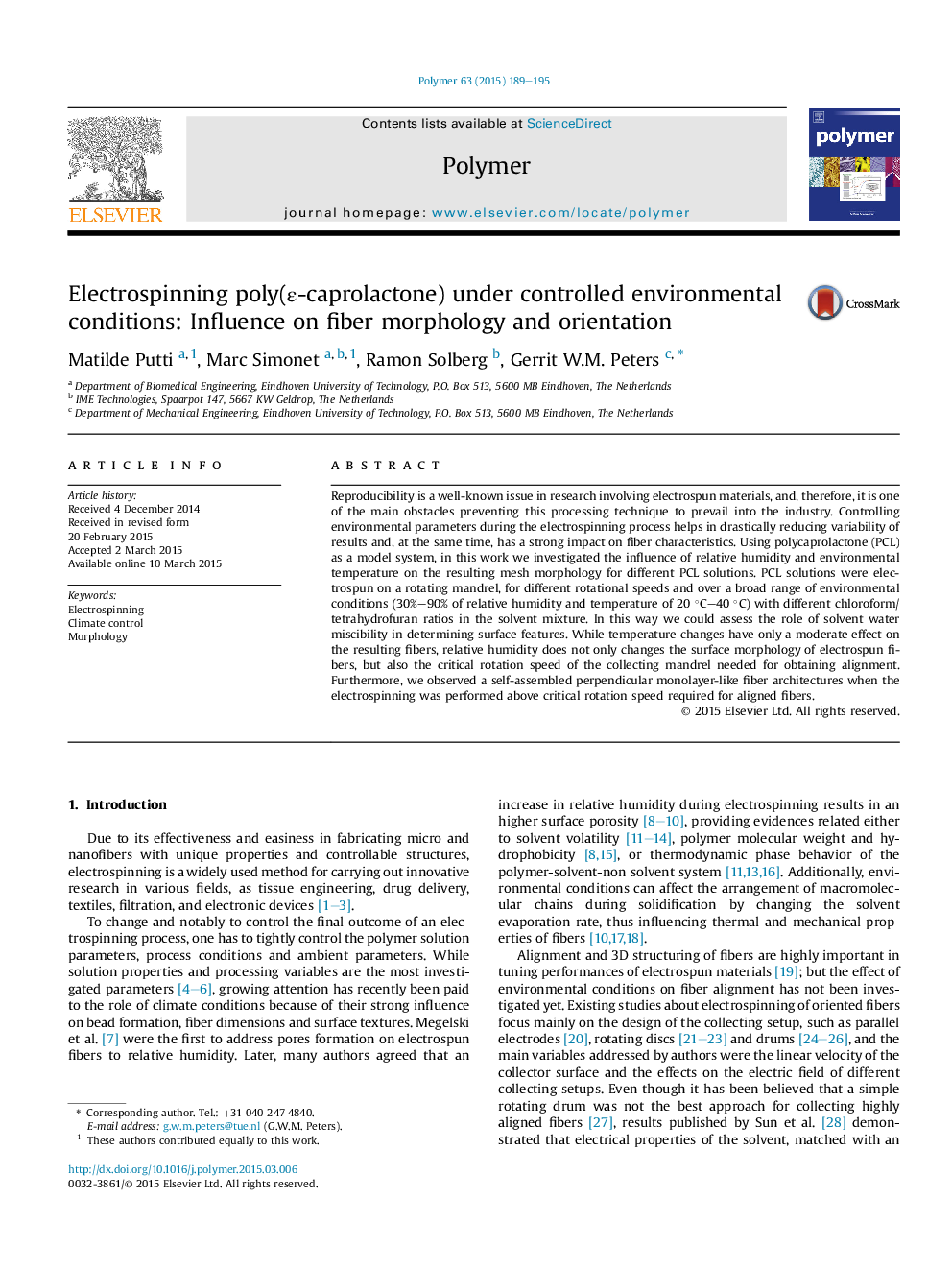| Article ID | Journal | Published Year | Pages | File Type |
|---|---|---|---|---|
| 5180494 | Polymer | 2015 | 7 Pages |
â¢Changes in environmental conditions strongly affect electrospun fiber surface properties.â¢Changes in environmental conditions during electrospinning affect fiber orientation.â¢Water miscibility of the solvent system is important in determining surface morphology of electrospun fibers.â¢Spontaneous formation of perfectly aligned vertical monolayer-like fibrous structures can occur at high uptake speed.
Reproducibility is a well-known issue in research involving electrospun materials, and, therefore, it is one of the main obstacles preventing this processing technique to prevail into the industry. Controlling environmental parameters during the electrospinning process helps in drastically reducing variability of results and, at the same time, has a strong impact on fiber characteristics. Using polycaprolactone (PCL) as a model system, in this work we investigated the influence of relative humidity and environmental temperature on the resulting mesh morphology for different PCL solutions. PCL solutions were electrospun on a rotating mandrel, for different rotational speeds and over a broad range of environmental conditions (30%-90% of relative humidity and temperature of 20 °C-40 °C) with different chloroform/tetrahydrofuran ratios in the solvent mixture. In this way we could assess the role of solvent water miscibility in determining surface features. While temperature changes have only a moderate effect on the resulting fibers, relative humidity does not only changes the surface morphology of electrospun fibers, but also the critical rotation speed of the collecting mandrel needed for obtaining alignment. Furthermore, we observed a self-assembled perpendicular monolayer-like fiber architectures when the electrospinning was performed above critical rotation speed required for aligned fibers.
Graphical abstractRelative humidity influences surface morphology of polycaprolactone fibers, as well as the minimum uptake speed for obtaining alignment.Download full-size image
